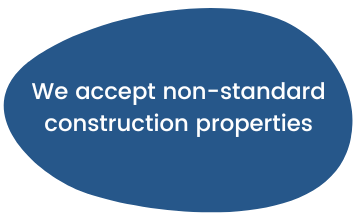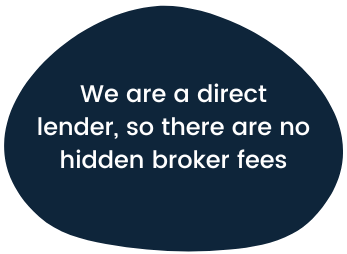
Talk to specialist HMO mortgage experts
- Properties in England, Wales, Scotland, Northern Ireland
- Up to 8 bedrooms
- Multi-unit freehold blocks of up to 6 storeys
- Loan to value up to 75%
- Individuals and limited companies accepted
- 125% rental coverage
- First time landlord/first time buyers with no rental history (LTV restricted to 65%)
- Most property constructions accepted
- Generous affordability calculation
We are flexible on credit profiles and can accept personal income to top-up rental coverage in our affordability calculations.

Specialist HMO mortgage lending
Borrowing against a house of multiple occupancy, or HMO, with some lenders is restricted to just experienced landlords. However, whether you are an experienced landlord or a first time buyer you can get an HMO mortgage with Mercantile Trust.
There is no limit on the number of bedrooms with our HMO mortgages. We can also help with Multi Unit Freehold Blocks, up to 6 storeys.
Enquire online, or call on our freephone number to speak to us today.

Why choose Mercantile Trust for your buy to let mortgage?
One size does not fit all in property investment. If you need a buy to let mortgage and the property is unusual, your circumstances require personal consideration, you’ve had credit history issues, or for any other reason you are struggling to borrow, we could be the lender for you.
Whatever your situation, we’ll take a common sense approach to your application. We offer opportunity and solutions that the high street doesn’t often cater for.
We are a well-established UK lender, operating since 2015. Our wider heritage goes back even further, our group began operation in 1988. So, you will get help based on long-standing industry experience.

- Up to 75% loan to value
- Rates from 11.08%
- 1st and 2nd charge
- Tenants must not be related to applicant
- Applicants must be at least 18 years old
- Mortgage term must end by applicant’s 85th birthday
- Rent must cover monthly payment at 125%
- 1% stress rate
- 12 months mortgage or rental history required
- Top slicing available
- No personal income requirements
- Mortgage term can be between 3 and 25 years
- Most property constructions accepted
- Individuals and limited companies accepted
- First time landlord, first time buyers accepted
- HMO's (Houses in Multiple Occupation) accepted
- No maximum number of rooms in HMO’s
- DSS tenants accepted
Frequently asked questions
A House in Multiple Occupation (HMO) is defined as a property that is being rented to three or more tenants that are unrelated. These tenants may share facilities such as kitchens or bathrooms.
HMO’s allow landlords to rent properties to multiple households, rather than just one singular household as is the case in a traditional buy to let property. An HMO mortgage works similarly to a typical mortgage for a rental property by allowing landlords to charge their tenants by room, flat, or section of the property. This can help to maximise their rental income.
What is classed as a large HMO?
The government stipulates that properties in England and Wales are designated as large HMO’s if they fulfil each of the following criteria:
- It is rented to 5 or more people who form more than 1 household
- Some or all tenants share toilet, bathroom or kitchen facilities
- At least 1 tenant pays rent (or their employer pays it for them)
The council local to the HMO property will determine if it needs a licence.
A large HMO (where there are five or more tenants form more than one household, bathroom and kitchen facilities are shared and at least one tenant pays rent is classed as a large HMO) must have a licence.
Enter the postcode of your HMO property on the government website’s “Find your local council” search facility, and click through to the relevant local council website.
An HMO licence varies in price depending on the amount set by the local council for your property.
Councils work out the licence fee in different ways, some charge based on the number of bedrooms your HMO has, whilst others have a fixed rate.
New licence and renewal HMO licence costs can also vary.
Most HMO mortgage lenders will require you to have experience in owning or letting a property, before they lend to you.
Some lenders will also place a cap on the number of bedrooms your HMO property can have, typically they won’t lend on any property with more than five bedrooms.
Mercantile Trust is one of only a handful of lenders that could offer you an HMO mortgage if you’re a first time buyer. What’s more, Mercantile Trust has no limit on the number of bedrooms your property has.
HMO properties are seen as specialist by lenders, making these types of mortgages more expensive than traditional residential or buy to let mortgages.
The HMO mortgage rate you are offered will depend on many factors. Small HMO’s of up to 5-6 bedrooms with all tenants on one assured short-hold tenancy agreement (AST) typically attract lower rates, than large HMO properties with greater numbers of tenants, each on separate AST’s.
Lenders will also take into account much of the criteria they would for a buy to let mortgage such as the amount you wish to borrow, your deposit and your credit score.
HMO mortgage applications are assessed mainly on the potential/actual rental income of the property, i.e. how much rent can or could be charged for the property being purchased. It is essential to ensure that you can afford the mortgage as the property may be repossessed if you do not keep up with the repayments.
The amount of deposit you have available can have a major impact on your HMO mortgage. The bigger your deposit, the lower the amount of credit you’ll need to borrow.
This means your monthly interest-only payments (or capital repayments, depending on the terms you agree with the lender), as well as your interest rate, could be lower than if you were borrowing a greater percentage of the property value.
The amount you can borrow using an HMO mortgage varies from lender to lender and depends on circumstances such as the potential rental income of the property you’re looking to purchase.
As with any mortgage, a lender will state what percentage of the property value they are prepared to lend.
The potential rental income is used in an affordability calculation to ensure that the mortgage payments are adequately covered. The rent must more than cover the mortgage payment to be deemed affordable.
Lenders will state the amount the rent must exceed the mortgage, it is typically between 125% and 145%. It is referred to as the “rental coverage”.
If the rent only meets 100% of the mortgage payment, without the extra coverage, some lenders are prepared to take into account an applicant’s excess personal income to ensure that the rental coverage requirement is met. This is called “top slicing”.
HMO mortgages tend to be more expensive than buy to let mortgages as the mortgage lender is taking on more risk.
This is due to the likelihood that you will have a higher turnover of tenants than a normal buy to let, and therefore more periods without income from part of the property. Additionally every tenant comes with the risk that they won’t be able to pay their rent or problems could occur.
Establishing whether an HMO property is worth it often comes down to assessing its rental yield. This is the amount an investor is likely to make each year on a property from its rental income. This is expressed as a percentage.
To calculate gross rental yield, take the yearly income of the property and divide it by the total property value.
This calculation doesn’t take into account extra costs associated with renting the property (e.g. things like maintenance, HMO licence, agent’s fees, insurance, void periods, ground rent). If those costs can also be calculated and deducted from the annual income, the illustration of ‘net’ yield will be a truer picture.
Knowing this figure is important as it helps ensure that they make a strong return on their investment. If the income from rent is less than the expenditure in the property, then the investor will be making a loss on the property and it won’t be worth it.
It is vital to take into account all costs associated with purchasing a property, including those involved with the mortgage and also leave room for contingency, in case something goes wrong at the property.
The cost of HMO mortgages vary hugely on a number of factors, including size of the property, rental income, your personal financial situation and credit history and your experience as a landlord.
Those with experience as either a landlord, or an HMO landlord are often seen as lower risk to a lender as they are likely to know how to deal with many of the issues that arise from being a landlord. As such they may pay less for an HMO mortgage than someone with minimal experience as a landlord.
However, this isn’t to say that with no experience you can’t get an HMO mortgage, some lenders welcome applications from both first time buyers and first time landlords.
Yes. There are lenders who offer HMO mortgages to limited companies.
This area of the market is more specialist, so not all lenders who offer buy to let mortgages will offer HMO mortgages. Those that do, may not accept limited company applications.
Some lenders place restrictions on limited company applications for HMO mortgages, due to both their more complex nature and the increased risk when compared to a normal buy to let mortgages.
However, there will be a choice of lenders available.
Going direct to a specialist HMO mortgage lender could save you money, as if you use a broker they may charge fees.
However, if you apply to a lender whose wider criteria does not meet your needs and circumstances, you could incur the cost of a valuation and then be turned down.
If you go direct to an HMO lender, it is important to research their criteria thoroughly, through speaking with their advisors to make sure they are likely to accept your application.
It is vital that you are realistic about your property value, as down-valuations are common and costly.
